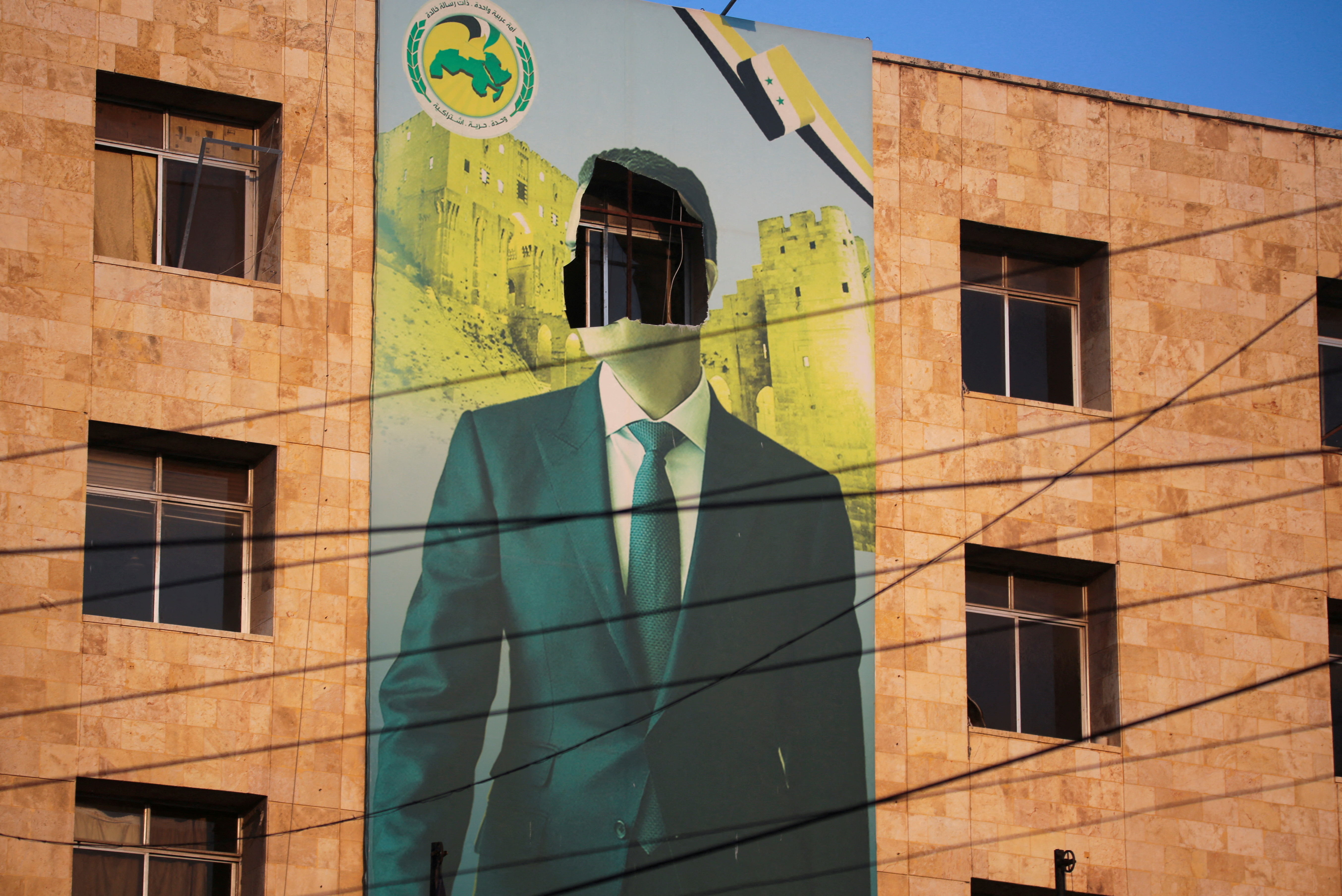Assad Regime's Rapid Fall Rattles Russia's Middle East Strategy
The sudden collapse of Bashar al-Assad’s regime in Syria seriously weakens Russia’s position in the Middle East and its ability to provide security to its allies. After 13 years of supporting the dictatorship, Russia is also losing its ability to influence the political situation in Syria and its neighbourhood The Russian government’s priority is to keep the right to use the military bases in the country—a naval base in Tartus and an air base in Khmeimim. Losing them would make it difficult for Russia to conduct military operations in the Mediterranean and Africa.
.png) AA/ABACA / Abaca Press / Forum
AA/ABACA / Abaca Press / Forum
Since the beginning of the civil war in Syria in 2011 amidst the Arab Spring, Russia, together with Iran, provided the Assad regime with the military, financial, and diplomatic assistance necessary to stay in power. To protect its ally from rebel groups seeking the regime’s overthrow and to combat jihadists, including ISIS, Russia launched a direct military intervention in 2015, which consisted mainly of missile and airstrikes targeting rebels and civilians. Ground operations were mainly carried out as of 2018 by mercenaries from the Wagner Group and Redut (eng. Redoubt) in cooperation with local forces. At least 550 Russian military personnel were killed during the intervention. The action cost about $2.5-4 million per day at its peak (according to Jane’s estimates). By keeping Assad in power, Russia was able to increase its military presence in the Middle East and build its image as a reliable strategic partner among regimes in conflict with the West. Its cooperation with Iran in this area was at the same time intended to ensure Russia’s influence and position vis-à-vis Israel and the U.S. Russia also received a share of the profits from the exploitation of Syrian oil fields.
Political and Image Losses
The Syrian dictator’s long-standing hold on power was used to create an image of Russia as a global power. The swift fall of the Assad regime in December 2024 after an offensive lasting just a few days by rebels of the Islamist group Hayat Tahrir al-Sham (HTS) is therefore a strategic defeat for Russia. It has called into question its ability to protect its allies by military means, as well as the effectiveness of Russian security advisors. This will have a negative impact on Russia’s credibility in Africa and its relations with the regimes in Libya, Mali, Burkina Faso, Niger, and Equatorial Guinea. Although there were around 4,000-5,000 Russian military personnel in Syria during the rebel offensive, no attempt was made to stop it. The lack of response was most likely due to the concentration of military forces and resources on the war in Ukraine, for which redeployment could have had negative consequences on the frontline. Russia’s surprise at the developments in Syria and failure to take preventive action may also be indicative of its reconnaissance and intelligence weaknesses in the Middle East. As a consequence of the fall of the Assad regime, Russia’s ability to shape the political and military situation in the region will be less while Turkey and Israel will benefit. For Russian propaganda, explaining this situation to both its own citizens and those of the countries of the Global South is problematic.
Russian Military Bases in Syria
If Russia fails to reach an agreement with the new Syrian authorities, it could lose access to the seaport at Tartus and the airport at Khmeimim (Latakia). These bases are of strategic importance for Russian military capabilities in the Mediterranean, the supply of the African Corps, and the transport of natural resources mined in Africa.
The 720th Material and Technical Support Point in Tartus is the only Russian naval base outside the country (not including Sevastopol in occupied Crimea). During the civil war in Syria, it served as a key logistical hub for Russian military aid to the Assad regime. In January 2017, Russia and Syria signed an agreement allowing Russia to expand the base and maintain up to 11 Russian ships there, as well as free use for 49 years. In early December 2024, Russia withdrew all of its ships—three missile frigates, a submarine, three patrol boats, two tankers and an oceanographic research vessel—for a military exercise. The ships have not returned to the port of Tartus but remain in the vicinity
(8-15 km away).
The Khmeimim air base was established during the 2015 military intervention in Syria near Bassel Al-Assad International Airport (Latakia). It has facilities to station around 30 aircraft (including strategic bombers and transport aircraft) and around 15-20 helicopters. It was used by the Russian Aerospace Force (VKS) for airstrikes against rebel positions, giving the Syrian army an advantage. It was also an important refuelling point for transport aircraft flying from Russia to Africa. Russian forces also used more than a dozen military garrisons primarily of tactical importance related to the implementation of operations in Syria. Military personnel located there were evacuated to Tartus and Khmeimim, from where Russian transport aircraft fly to Chkalovsk and Machachkala in southern Russia.
Possible Scenarios
The Russian government says it is negotiating with the Syrian interim government (dominated by the HTS, which Russia had fought) to maintain access to the military bases. Although Russian news agencies reported on 8 December that an interim agreement had been reached, it is not clear whether this involves the use of the bases or merely their safe evacuation. In exchange for the preservation of this infrastructure, Russia may offer the new authorities, for example, assistance in obtaining international legitimacy, which will be important, as the HTS is considered a terrorist organisation (e.g. by the UN). However, this bargaining chip could be rendered worthless if the West decides to conditionally recognise the government in Damascus. Some representatives of the Syrian interim government, however, take the view that the issue of a foreign military presence should be decided by the people through a referendum. Given the Syrian public’s aversion to Russia, which has supported the dictator for years, the outcome would most likely be unfavourable to it. The issue of negotiations could be further complicated by internal divisions between the three main rebel groups, notably the U.S.-backed Kurdish Syrian Democratic Forces (SDF) and the Turkish-backed Syrian National Army (SNA).
Due to restrictions in the Turkish straits for warships, Russia will not redeploy its ships from the Mediterranean to the Black Sea, although formally five of them (belonging to the Russian Black Sea Fleet) could return to their home ports and take part in operations against Ukraine. Russia is unlikely to decide to do so because of its interests in Africa, as well as the effectiveness of Ukrainian naval operations, which prevent the Russian fleet from operating freely in the western part of the basin.
In the new strategic situation, the importance of Libya, which acts as a logistical hub for Russian operations in Africa, will increase. Most likely, Russia will seek an agreement with its ally Gen. Khalifa Haftar, who heads the Libyan National Army that controls Benghazi and the eastern part of Libya. Such an agreement could provide Russia with the permanent use of the port of Tobruk or Benghazi. In the first quarter of 2024, Russia delivered 6,000 tonnes of military equipment to bases in Libya and the number of Russian personnel increased to 1,800. Russia has modernised and expanded the Al-Khadim, Ghardabiya, Al-Jufra, and Brak Al-Shati airbases, to which more than 100 military transports have been made in the last two years. The UN-recognised Government of National Accord in Tripoli opposes the redeployment of military equipment to Libya, fearing that this could encourage Gen. Haftar and his forces to make another attempt to take control of the entire country.
Conclusions and Outlook
Negotiating an agreement to maintain access to bases in Syria will be difficult for Russia because of its support for the ousted regime. However, it cannot be ruled out that the new authorities, faced with the impossibility of ensuring Syria’s security against external aggression (e.g., Israeli military action), will decide to maintain the Russian presence for some time. The loss of access to this infrastructure would significantly weaken Russia’s military position in the Middle East and will make it marginally more difficult to supply African Corps operations, for example. Transport planes would have to refuel at airports in southern Russia before reaching Libya, a country that could become a major logistical hub for Russian operations in Africa. The possible redeployment of the Russian navy (so far stationed in Syria) to this part of the Mediterranean will have strategic implications for NATO’s Southern Flank. This is because it increases Russian missile strike capabilities (with Zircon, Kalibr, and Onyx missiles) against targets in Southern Europe. If negotiations with Gen. Haftar fail, Russia may also decide to redeploy its ships to areas in northern Europe, including the Baltic Sea. This is because four of them already belong to the Northern Fleet, which is under the direct command of the Leningrad Military District, created in 2024 in response to Sweden and Finland's membership of NATO. For both options, the Alliance should analyse the threat and possibly adjust regional defence plans.





.png)